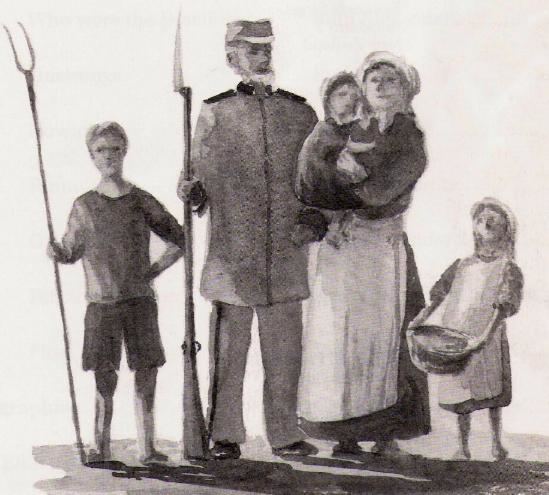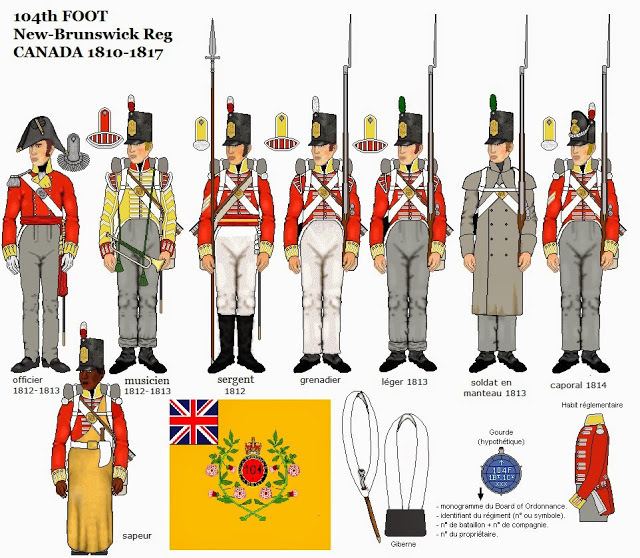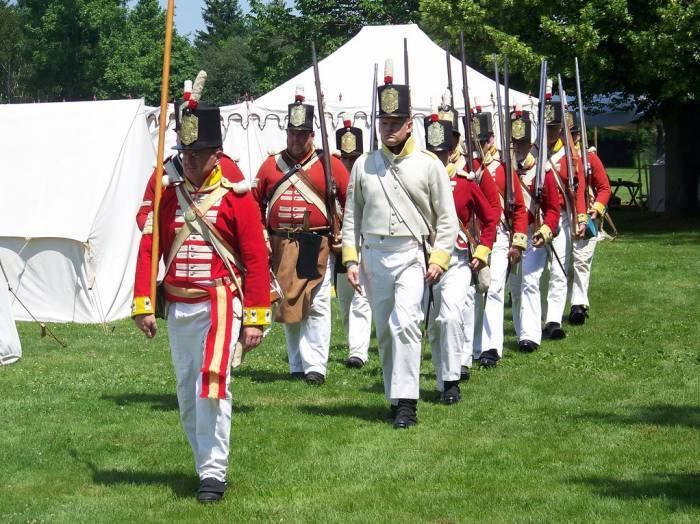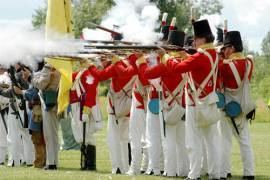 | ||
Similar Sea Fencibles, Canadian Voltigeurs, Canadian Militia, Canadian Women's Army Cor, Butler's Rangers | ||
Lfd fencibles army ball
The Fencibles (from the word defencible) were British militia regiments raised in the United Kingdom and in the colonies for defence against the threat of invasion during the Seven Years' War, the American War of Independence, the French Revolutionary Wars, the Napoleonic Wars and the War of 1812 in the late 18th and early 19th centuries. Usually temporary units, composed of local volunteers and commanded by Regular Army officers, they were usually confined to garrison and patrol duties, freeing Regular Army units to perform offensive operations. They had no liability for overseas service.
Contents
- Lfd fencibles army ball
- Apr 5 natchez fencibles mustered in
- Highland Fencibles
- American Revolutionary War
- Irish Rebellion of 1798
- French Revolutionary and Napoleonic Wars
- War of 1812
- Bombay Fencibles
- Malta
- New Zealand Wars Land Wars
- Standards
- American use
- References

They included naval forces known as "River Fencibles", made up of boatmen on the Thames and other southern English towns and cities, as well as Sea Fencibles, who, among their other duties, manned small commercial vessels converted to coastal defense.

Apr 5 natchez fencibles mustered in
Highland Fencibles

The Scottish Highlands supplied fencible regiments for most of the second half of the 18th century. The first regiment raised was the Argyle Fencibles in 1759 and the last was the MacLeod Fencibles in 1779. In all over 20 regiments were created, although they were not all in existence at the same time. Some Highland fencibles regiments saw action in the Irish Rebellion of 1798, while other performed garrison and policing duties in Britain, Ireland, the Channel Islands and Gibraltar.
American Revolutionary War

The Royal Fencible Americans was a Loyalist unit raised by the British in Nova Scotia in 1775, that successfully withstood an attack by Patriot forces under Jonathan Eddy at the Battle of Fort Cumberland.
Irish Rebellion of 1798

Fencibles were raised for the entirety of the British Isles. In Thomas Flanagan's The Year of the French Fencibles are raised by Cornwallis and other generals to combat the Irish Rebellion of 1798.
French Revolutionary and Napoleonic Wars
Fencible units were raised in the United Kingdom during the early years of the war. This included not only land regiments but also the Sea Fencibles (raised in 1798 and disbanded in 1810). By the Peace of Amiens in 1802, all Fencible Regiments had been disbanded and those members willing to continue serving had been transferred to regular army regiments, though some Fencibles were raised again to meet the threat of Napoleon's invasion of England in 1803 to 1805.
War of 1812
In the early years of the 19th Century, regiments of Fencibles were raised in the Canadas, New Brunswick, Newfoundland, and Nova Scotia. The regiments were liable for service in North America only (although the New Brunswick Fencibles volunteered for general service and became the 104th Regiment of Foot in the regular army). All but one of these regiments saw action in the War of 1812. The regiments were disbanded in 1816 and 1817, after the War of 1812. Although the units were disbanded, several regiments in Canada continue to perpetuate their historic lineage.
Most of the Fencible regiments were formed in 1803, including the Nova Scotia Fencibles, the Canadian Regiment of Fencible Infantry (perpetuated by the Royal 22nd Regiment), the Royal Newfoundland Fencibles (perpetuated by the Royal Newfoundland Regiment), and the New Brunswick Regiment of Fencible Infantry (perpetuated by the Royal New Brunswick Regiment). The Glengarry Light Infantry Fencibles (perpetuated by the Stormont, Dundas and Glengarry Highlanders) was formed in February 1812, several months prior to the war. In addition to these Canadian units, the Michigan Fencibles, a small unit of 45 men was raised at Fort Mackinac in 1813.
Bombay Fencibles
The Bombay Fencibles were raised in 1799 by the following order of the Bombay Army: "A regiment consisting of two battalions of natives to be, under the denomination of the "Bombay fencibles," raised from the inhabitants of Bombay, Salsette, and Caranjah, on condition of not being liable to serve out of the said bounds; at the * pay to each private of 5 rupees 2 quarters per month, besides clothing: which last they will receive from the honorable company."
The 5th battalion of the Maratha Light Infantry was raised in December 1800 from the Bombay Fencibles as the 1st Battalion, the 9th Regiment of Bombay Native Infantry.
Malta
The Royal Malta Fencible Regiment was in existence from 1815 to 1861 when it became the Royal Malta Fencible Artillery until 1881. The term 'Fencible' was dropped in 1889.
New Zealand Wars (Land Wars)
In 1847 the Royal New Zealand Fencible Corps were raised and sent to New Zealand for the defence of the early settlers there. They were settled in a four new outlying villages around Auckland, the capital, at Onehunga, Otahuhu, Panmure, and Howick, the largest of the four. About 75 fencibles and their sons took part as militia in the 1860s New Zealand Wars.
Standards
Fencible regiments were less effective than regular troops for military duties, with problems of lack of education and disease. The men would take part in inter-regimental brawls and attacks on soldiers. Some regiments of Fencibles, however, were noted for exceptional service.
American use
A small number of units raised before and during the Civil War used the title "fencibles". Example include the Texas Fencibles and the Bellefonte Fencibles (one of the ancestor units of the 112th Regiment). A Texas unit called the Panther City Fencibles existed from 1883 to 1898, and a modern Texas State Guard unit has used the name since 1993.
